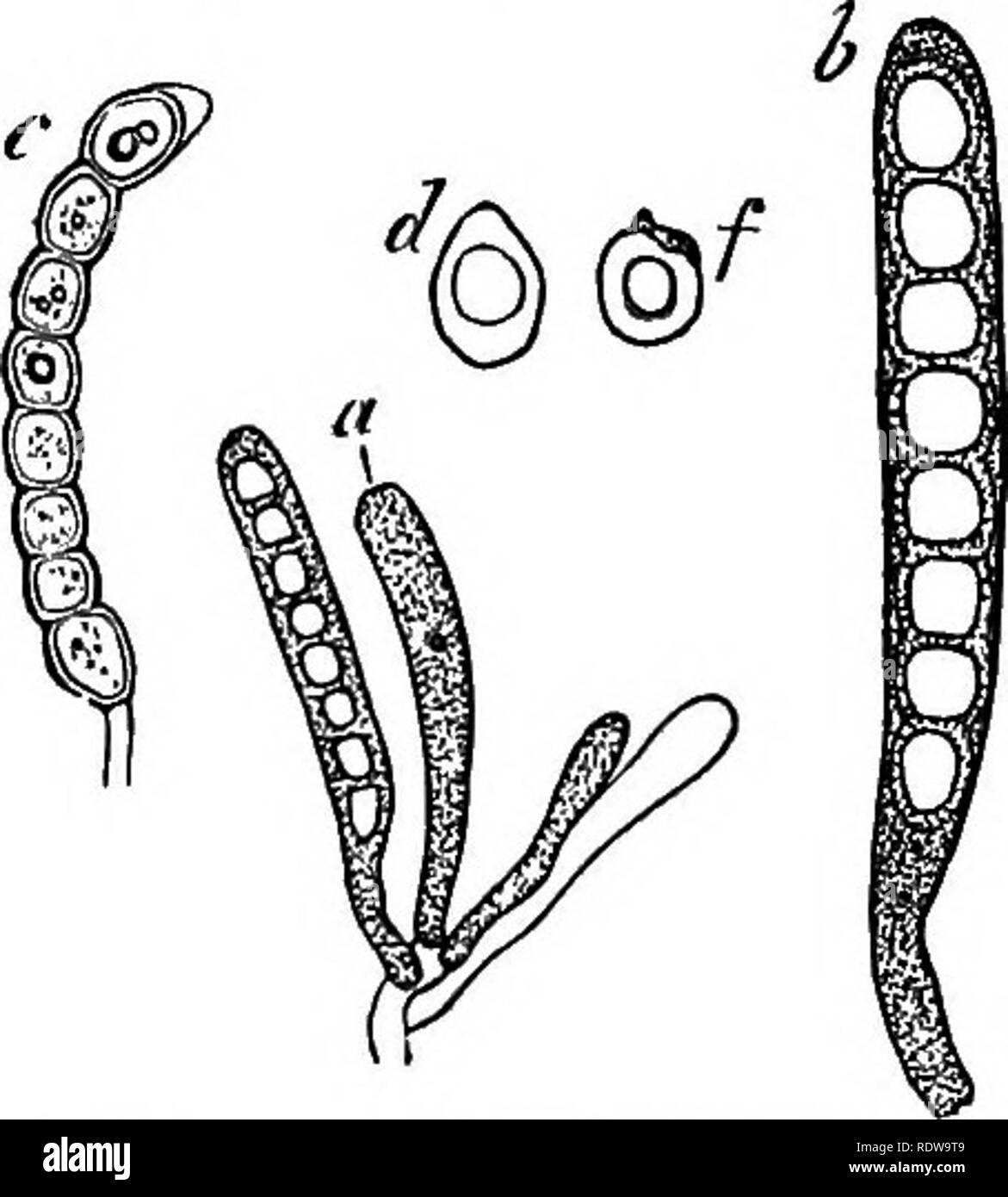. Botany for high schools and colleges. Botany. 298 BOTANY. ascus (the so-called free cell formation). Usually there is a considerable quantity of the unused protoplasm left over after the ascospores are fully formed (Fig. 304, a, h, c). The usual number of ascospores is eight (Figs. 202, 203, 204), although in exceptional genera they range from one or two (Umbilicaria) to a hundred or more (Bactrospora, and other genera). They are frequently septate, sometimes being di- vided into two portions—e.g., Parmelia (Fig. 202)—or many, as in Gollema Urceolaria, etc. In the gymnocarpous lichens the as

Image details
Contributor:
The Book Worm / Alamy Stock PhotoImage ID:
RDW9T9File size:
7.1 MB (212.2 KB Compressed download)Releases:
Model - no | Property - noDo I need a release?Dimensions:
1500 x 1665 px | 25.4 x 28.2 cm | 10 x 11.1 inches | 150dpiMore information:
This image is a public domain image, which means either that copyright has expired in the image or the copyright holder has waived their copyright. Alamy charges you a fee for access to the high resolution copy of the image.
This image could have imperfections as it’s either historical or reportage.
. Botany for high schools and colleges. Botany. 298 BOTANY. ascus (the so-called free cell formation). Usually there is a considerable quantity of the unused protoplasm left over after the ascospores are fully formed (Fig. 304, a, h, c). The usual number of ascospores is eight (Figs. 202, 203, 204), although in exceptional genera they range from one or two (Umbilicaria) to a hundred or more (Bactrospora, and other genera). They are frequently septate, sometimes being di- vided into two portions—e.g., Parmelia (Fig. 202)—or many, as in Gollema Urceolaria, etc. In the gymnocarpous lichens the ascospores escape directly into the air. and this they generally accomplish with such force as to be projected some millimetres ; in the angio- carpous genera they first escape into the cavity of the perithe- cium, from which they pass out through an opening in its apex. 396.—In germination the as- cospore commonly sends out a germinating tube, which is a growth from the endospore; it develops directly into a hypha, and becomes branched and sep- tate. Bi- or multilocular asco- Fig. 204.—Asci and ascospores of n j i. _. • sphoBTophmms giobiferus. a, yonng spores Usually Send out a gcrmi- '^.r.nTS::^f^'ATllTl^ "^t'^g t^fce f^-oi^ ^ach cell. In spore"rx^39?exl=e1, u:^>{«-rfte; the genera with very large asco- DeBary. spores—e.g., Megalospora, Fer- tusaria, etc.—the germination takes place in a way somewhat different from that just described. In the endospore a great number of cavities or canals form {g, Fig. 205), from each of which there grows out a germinating tube {d, Fig. 205); these many tubes elongate into hyphse, and become septate and branched (/, Fig. 205). 397.—In addition to the apothecia, with their contained ascospores, there are other organs which contain bodies which are probably reproductive in their nature. The best known of these are the spermagonia (Fig. 202, A, s, and Fig. 206), which are small cavities, usually found upon the same th